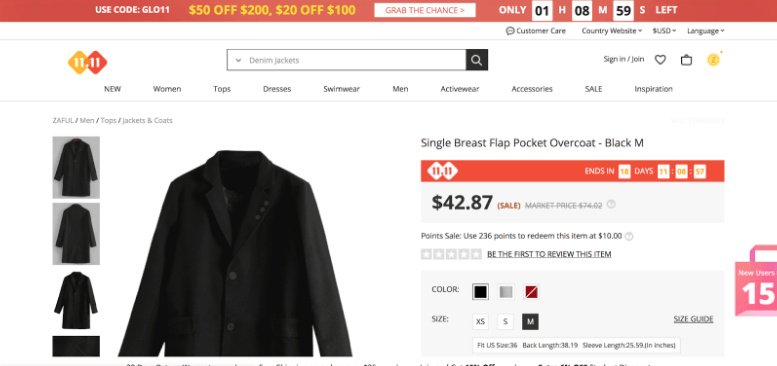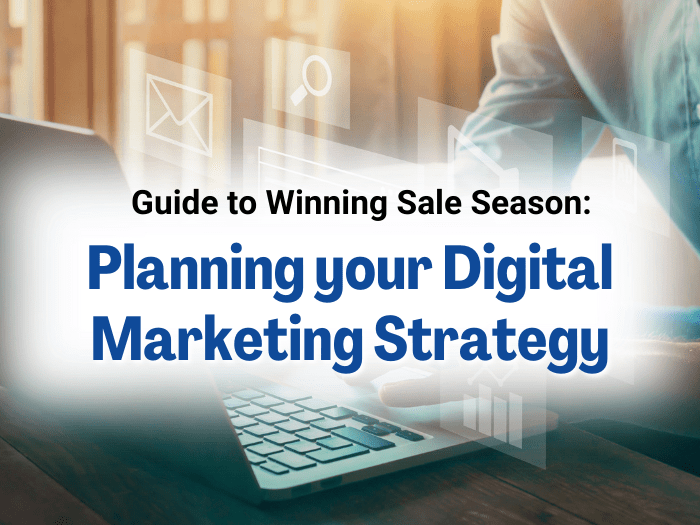In the previous content, we discussed understanding your market, how you can deal with creatives, and build a seamless shopping experience. Now you are ready to kick off and prepare for the upcoming Sale Season.
It’s not only you; consumers are also preparing and looking forward to deals and events. Your brand must have a specific media plan that traverses the mega-sale event— from start to end. With a well-thought mega sale media strategy, you will get the most out of your attractive creatives and seamless shopping experiences. Since you now understand your target audience and have directed your strategies towards building awareness, and ramping up sales (and discounts), get ready to maintain relationships with your buyers.
Phase One: Tease your Audience
A mega sale event’s pre-teasing phase is about prevailing your customers’ attention. It typically starts earlier, with buyers starting their hunt as early as four weeks before a double-digit event day. The first reason they research in advance: are offers of discounts and freebies. Potential buyers will consume your product efficiently if a brand offers giveaways or vouchers.
In this stage, while people browse for bargains, brands can motivate and impact purchase decisions by standing out. For example, a full-funnel marketing strategy that contains upper-funnel marketing through video ad campaigns can help.
Online Videos: Online video is an essential medium for companies in this phase because it’s a powerful source of discovery for shoppers. Sixty-three percent of shoppers in Singapore frequently watch video reviews or product recommendations before shopping online. Over 85% of YouTube shoppers in Thailand, Vietnam, Indonesia, and the Philippines agree that YouTube improves the conventional shopping journey by providing unexpected inspiration.
The internet suggests a similar idea: video is the future of marketing.
- Hubspot discovered that 78% of people watch online videos weekly, while 54% watch videos daily.
- Google’s studies show that 6 out of 10 users prefer watching online videos to television.
- YouTube says its users more than 1 billion hours of video daily on the platform.
To address this growing market, Facebook, Instagram, Twitter, and LinkedIn have evolved into ‘video first’ and begun new video-friendly placements like ‘live,’ ‘stories,’ and ‘reels.’ The popularity of video-based platforms like YouTube, Snapchat, and Tik Tok has exploded and become staples of online video consumption.
Consumers are keen on watching reels and short videos on different platforms to pass the time. For example, Thailand’s Central Retail department store highlighted the video creative for its 12.12 mega sale advertisements on its app. In the first 5 seconds, the unconquerable offers individuals stand to gain: high discount rates, low prices, and a buy-one-get-one promotion.
Powerful CTA: Going back to that video of Thailand’s Central Retail department store, the video also used a compelling CTA, “Download the app and shop now,” to compel people to use the app to shop. By making this creative best practices part of your brand’s mega sale innovative technique, you’ll be well-equipped to make a creative that catches people’s awareness during this busy sale season and thoroughly impacts your bottom line.
On-the-day event: Limited Discounts
Limited-time offerings, special discounts, hurry-up discounts, while-supplies last offer, or one-time-only – compels the buyers to add to their cart and click to purchase. Once they have been added to the cart days ahead, consumers are forced to act immediately.
A limited-time offer is any discount, deal, unique gift, or reward a buyer can get if they purchase from you during a specific period. Retailers use limited-time offer ads to get people to buy their products.
Here’s a great example from Zaful. The website offers a pre-sale countdown, how much discount you will expect from shops, and a good CTA. “Ends in X days” gives the buyer some idea of when they can purchase the product at that specific price. And if they want it, they will make sure they buy the product within that sale period. On top of that, you can see from the bottom that they offer free shipping (in the APAC region) for orders above $35. And other promotions at the bottom of their page.

Source: www.zaful.com
Placing a countdown timer in an email can send urgency to your customers’ mailboxes. That visualization reminds them a deal is for a limited time and could prompt recipients to visit your store immediately instead of saving it for later.
Showing your customers a lower price, free shipping, or some other discount makes them feel like they’re getting the most deal for their money. Making a special event or a sense of urgency (like the Singles Day 11.11 Event) lets buyers know they must act fast if they like that value.
Note: Urgency can be vital to getting buyers to pull the trigger on a purchase. It draws shoppers to purchase now because they expect feeling regret later about ignoring a deal. This is accurate even if they know the retailer intentionally makes scarcity.
After-sales event: Building loyalty and customer engagement
Don’t stop there! The shopping momentum might drop after a mega sale event. Your relationship with buyers should stay healthy because peak shopping occurs throughout the year. You are cultivating year-long affinities with consumers helping your brand stay top of mind.
Having an always-on sales campaign in your media approach can help engage buyers all year long and excite them about your products and services. It allows your brand to offer when people search for mega-sale events, which tend to be from one deal to another without delay. In Indonesia, search interest in the “12.12 sales” and “Black Friday sale” began to rise even as search appeal in the “11.11 sale” just peaked.
Customer loyalty is essential for many reasons. These are the major ones:
- Repeat customers generally spend extra than new customers. Since they already trust your business and your products or services, current customers spend more money than new customers. The quantity they spend increases generally while doing business with your brand.
- Loyal consumers generate higher conversion rates. Current customers have an average conversion rate of about 60% to 70%, while new consumers have a conversion rate of 5% to 20%. Therefore, you get more value from loyal customers visiting your site.
- Consumer loyalty boosts yields. The more consumer loyalty you have, the better your gains will be. A 5% increase in customer retention could increase business profits by 25% to 95%.
- Consumer retention is cheaper than recruitment. While getting new customers is essential, it can be about five times more costly than keeping a loyal one. Simply keeping loyal customers is much more cost-effective, as they carry higher earnings at a lower expense.
- Loyal consumers shop regularly. Since they had positive experiences with you, repeat customers tend to shop more frequently than new customers. Around the holidays, customers buy gifts and pay more than they usually would during the rest of the year.
- Consumer loyalty allows you to plan. You can make better decisions and effectively plan your finances and marketing actions with loyal customers.
How to do this?
- Create a customer loyalty program to encourage and reward loyal customers.
- Set up referral programs when they engage in your business by allowing them to receive benefits when referring friends or loved ones.
- Stay true to your brand and be consistent with your marketing strategies.
- Make sure you utilize your social media efficiently and interact with your followers. Creating a solid online community encourages customers to come back.
- Show customers you value their opinion by encouraging them to give feedback.
- Store customer data to make it easier for you to build your marketing strategy in the future through email marketing.
Consider Amazon, for instance. Prime users can complete orders by clicking “buy now” underneath the desired product. Convenience encourages buyers to make regular purchases.
Final take
You will likely be on top of their purchase by strategizing and creating steps to maintain customer relationships. For more tips on strategies to connect with customers on their shopping journey, explore the rest of our mega sale guide to finding out how to understand your market, deal with creatives and build a seamless shopping experience for your customers.

